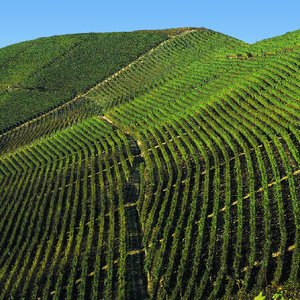You chose: barolo
-
-
A renowned producer of Barolo, the “king of wines,” Fontanafredda has been noble since the start. The winery was founded in 1858 by Count Emanuele Alberto di Mirafiori on the hunting grounds of his father, King Vittorio Emanuele II. The first king of Italy, Emmanuele was known for his bravery — and for his fondness for wine.
-
If one day you are walking around NYC and taste Barolo in a chocolate praline, you might be transported from Murray Hill to the beautiful hills of Langhe. And there is a great story to tell. It is about crispy dark chocolate, it is about Barolo Filling, it is about the 19th-century Italian statesman, Camillo Benso Count of Cavour
-
Luciano Pignataro, a journalist for Naples’ Il Mattino—the leading newspaper in Southern Italy—has spent the last thirty years writing about agriculture and the last twenty about enogastronomy. His is the longest running column on wine in an Italian paper. He is the representative of two southern regions for Slow Wine, Slow Food’s wine guide, and head of the Southern branch of the Guida Ristoranti Espresso. In 2004 he began a blog (www.lucianopignataro.it), now one of the most frequented in Italy, with almost five million hits in 2015 alone. The blog features reviews of wine, restaurants, pizzerias, pastry shops and cheeses. He has published many guides to wine and books on Neapolitan cuisine.
-
Piedmont, located in the northwest corner of the Italian peninsula, is known for the production of great wines. Among the most famous of these wines is Barolo, often called the “king of wines and the wine of kings.”
-
Steak for dinner makes any meal seem special. A simple pan sauce made with Barolo gives this recipe Italian flair. Tender steaks are quickly sauteed, then topped with a reduction of shallots, red wine, pancetta and balsamic vinegar. The pancetta enriches the sauce and adds texture while the vinegar adds a sweet tart tang.
-
“Mulino a Vino” (or Wine Mill) has just opened a few months ago and is already making the headlines. Writer and pleasure activist Fred Plotkin went there with the i-Italy TV crew to find out why. Find video interviews and the transcript of his conversation with Chef Davide Scabin.
-
The founder of Eataly talks about Alba and the Langhe, a thriving region located in the heart of Piedmont, between the sea and the Alps
-
The closer one arrives to Montalcino, the more signs appear inviting the traveler to local producers for a wine tasting. And why not? Among the most prized of red wines anywhere, Brunello, along with the Piedmontese Barolo, is the Italian wine said to age best. It is made exclusively from the Sangiovese grape and harbors its secrets for years in great oak barrels and then in bottles, developing an alcohol content of at least 12%. At least two years have passed before it is drunk. At that time proper decanting is advised, or at least before consumption it must be let “breathe” (that is, let the opened bottle sit quietly a few hours). Finally it is poured into a glass, which the wine connoisseur will hold to the light a moment to see and admire, in the thin layer of glycerine atop the ruby red wine, a miniature rainbow striped in layers of orange and black.
-
The closer one arrives to Montalcino, the more signs appear inviting the traveler to local producers for a wine tasting. And why not? Among the most prized of red wines anywhere, Brunello, along with the Piedmontese Barolo, is the Italian wine said to age best. It is made exclusively from the Sangiovese grape and harbors its secrets for years in great oak barrels and then in bottles, developing an alcohol content of at least 12%. At least two years have passed before it is drunk. At that time proper decanting is advised, or at least before consumption it must be let “breathe” (that is, let the opened bottle sit quietly a few hours). Finally it is poured into a glass, which the wine connoisseur will hold to the light a moment to see and admire, in the thin layer of glycerine atop the ruby red wine, a miniature rainbow striped in layers of orange and black.







































